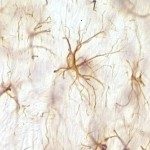Link to Pubmed [PMID] – 30396425
Link to DOI – S0147-9571(18)30072-910.1016/j.cimid.2018.09.009
Comp Immunol Microbiol Infect Dis 2018 Oct; 60(): 17-22
Camelids produce both conventional heterotetrameric antibodies and homodimeric heavy-chain only antibodies. The antigen-binding region of such homodimeric heavy-chain only antibodies consists of one single domain, called VHH. VHHs provide many advantages over conventional full-sized antibodies and currently used antibody-based fragments (Fab, scFv), including high specificity, stability and solubility, and small size, allowing them to recognize unusual antigenic sites and deeply penetrate tissues. Since their discovery, VHHs have been used extensively in diagnostics and therapy. In recent decades, the number of outbreaks of diseases transmissible from animals to humans has been on the rise. In this review, we evaluate the status of VHHs as diagnostic and therapeutic biomolecular agents for the detection and treatment of zoonotic diseases, such as bacterial, parasitic, and viral zoonosis. VHHs show great adaptability to inhibit or neutralize pathogenic agents for the creation of multifunctional VHH-based diagnostic and therapeutic molecules against zoonotic diseases.

